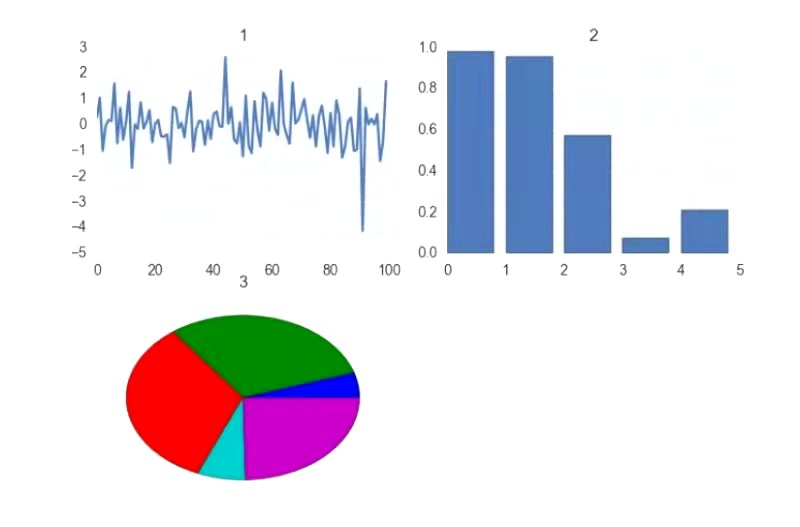import numpy as np ls1 = [10, 42, 0, -17, 30] nd1 =np.array(ls1) print(nd1) print(type(nd1)) import scipy import numpy as np from scipy import linalg mat_ = np.array([[2,3,1],[4,9,10],[10,5,6]]) #创建矩阵 print(mat_) #>[[ 2 3 1],[ 4 9 10],[10 5 6]] linalg.det(mat_) #矩阵的行列式 inv_mat = linalg.inv(mat_) #矩阵的逆 print(inv_mat) #>[[ 0.02409639 -0.07831325 0.12650602] #[ 0.45783133 0.01204819 -0.09638554] #[-0.42168675 0.12048193 0.03614458]] fig = plt.figure() ax = fig.add_subplot(2, 2, 1) y = np.random.randn(100) plt.plot(y); ax.set_title(‘1‘) y = np.random.rand(5) x = np.arange(5) ax = fig.add_subplot(2, 2, 2) plt.bar(x, y) ax.set_title(‘2‘); y = np.random.rand(5) y = y / np.sum(y) y[y < .05] = .05 ax = fig.add_subplot(2, 2, 3) plt.pie(y) ax.set_title(‘3‘) plt.draw() plt.show()

原文:https://www.cnblogs.com/lyxdd/p/14022710.html